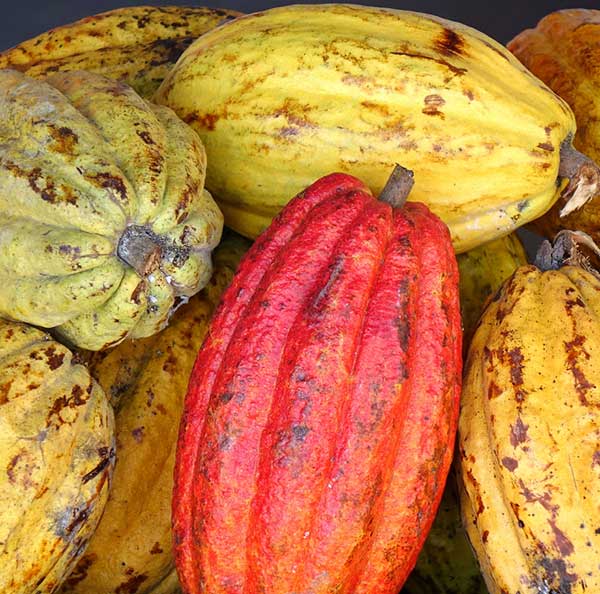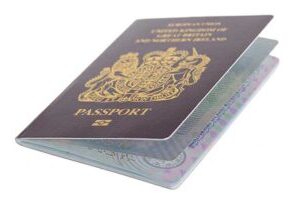BLOG
Unveiling the Cacao Trio: Criollo, Forastero and Trinitario Varieties Explained

Cacao, the key ingredient in chocolate, comes in three main varieties: Criollo, Forastero, and Trinitario.
Much like how different types of apples or grapes produce distinct flavours, each cacao variety brings its own unique characteristics to the chocolate we know and love.
Criollo: The Royalty of Cacao
Criollo, the “prince of cacaos,” is a rare and highly sought-after cacao variety that has captured the hearts of chocolate lovers worldwide. First domesticated in Central America over 3,000 years ago, Criollo is renowned for its complex flavour profile, characterized by notes of nuts, caramel, fruit, and a subtle floral aroma.
The Challenges of Cultivating Criollo
Despite its superior taste, Criollo trees face unique challenges:
- Lower yield compared to other cacao varieties
- Increased vulnerability to diseases
- Scarcity: Criollo makes up just 0.01% of all cacao grown worldwide
Unparalleled Flavour and High Demand
The distinct and unparalleled flavour profile of Criollo beans sets them apart from other varieties, making them highly valuable within the chocolate industry. Artisanal chocolate makers and connoisseurs are willing to pay premium prices to secure Criollo beans for their top-tier products.
Experience the Symphony of Flavours
Tasting a Criollo chocolate bar is like savoring a symphony of flavors, with hints of berries, cream, and spice all dancing on your tongue. While mass-produced chocolate bars might be like a catchy pop song, a Criollo chocolate bar is more like a virtuoso violin performance – refined, nuanced, and unforgettable.
View our range of our chocolate bars made with unroasted Criollo cacao.
Forastero: The Workhorse of the Chocolate Industry
While Criollo may be the “prince of cacaos,” Forastero is undoubtedly the workhorse of the chocolate world. This hardy and resilient variety, particularly the Amelonado subtype, accounts for an impressive 80-90% of global cacao production, providing a consistent and reliable supply of cocoa for mass-market chocolate products.
Thriving in Diverse Growing Conditions
Forastero’s robust nature allows it to flourish in various environments, from the humid rainforests of West Africa to the sun-drenched plantations of Brazil and Southeast Asia. Its adaptability and resilience make it an ideal choice for large-scale cultivation, ensuring a steady supply of cacao for the ever-growing chocolate industry.
The Foundation of Mass Produced Chocolate Treats
While Forastero may not possess the complexity and finesse of Criollo, its strong, earthy flavour profile and high yield make it an essential component in the creation of many beloved commercial chocolate products. From classic chocolate bars to indulgent truffles and decadent desserts, Forastero provides the foundation for the chocolate treats that millions of people enjoy every day.
Trinitario: A Marriage of Flavour and Resilience
Born from the union of Criollo and Forastero, Trinitario is a fascinating hybrid that first emerged in Trinidad in the 18th century. This variety inherits the best qualities of both its parents, boasting some of the superior flavour of Criollo as well as the disease-resistance and high yield of Forastero.
A Popular Choice Among Cacao Farmers
Trinitario’s versatility has made it a popular choice among cacao farmers, and it is now cultivated in various regions worldwide, from Venezuela and Ecuador to Cameroon and Papua New Guinea. Its adaptability and balanced characteristics have contributed to its widespread adoption in the cacao industry.
A Diverse and Delightful Flavour Profile
Although not as nuanced as Criollo’s flavour profile, Trinitario’s taste is more diverse than that of Forastero, with a range of fruity, floral, and nutty notes that vary depending on the specific growing conditions and post-harvest processing methods. This unique flavour profile adds depth and complexity to the chocolate products crafted from Trinitario beans.
Versatility in Chocolate Products
Trinitario’s adaptability has led to its widespread use in a variety of chocolate products, from single-origin bars to blended confections. Its balanced flavour and affordability make it an attractive option for chocolate makers and consumers alike, offering a delightful experience that combines the best of both worlds.
| Property | Criollo | Forastero | Trinitario |
|---|---|---|---|
| Rarity | Rarest (5-10% of world production) | Most common (80% of world production) | Uncommon (10-15% of world production) |
| Flavour Profile | Complex, mild, nutty, caramel, fruity, tobacco | Strong, earthy, robust, sometimes bitter or acidic | Balance of Criollo and Forastero, less acidic and bitter than Forastero |
| Aroma | Delicate, mildly acidic, rarely bitter | Powerful, less aromatic | More aromatic than Forastero |
| Bean Colour | Often white | Typically dark, uniform | Mix of light and dark |
| Cultivation | Difficult to grow, less resistant to disease, lower yield | Hardy, high-yielding, easier to grow | Hardier than Criollo, more disease-resistant, higher yield than Criollo |
| Primary Growing Regions | Central America, parts of South America, Caribbean | West Africa, Brazil, Southeast Asia | Originated in Trinidad, now grown in various regions (Venezuela, Ecuador, Cameroon, Papua New Guinea) |
| Used In | Fine, rare, expensive chocolates | Mass-produced, mainstream chocolate | Wide range of chocolate products |
| Fermentation Time | Shorter | Longer | Varies |
| Tannin Content | Low | Higher | Moderate |
| Theobromine Content | Lower | Higher | Moderate |
| Bitterness | Generally quite low | Can be bitter | Less bitter than Forastero |
| Acidity | Mildly acidic | Can be acidic | Moderately acidic |
Note that these are general characteristics, and there can be significant variation within each type depending on factors such as specific genetics, terroir (growing conditions), and post-harvest processing methods.
Beyond the Big Three: Exploring Cacao’s Genetic Diversity
While Criollo, Forastero, and Trinitario may be the most well-known cacao varieties, the world of cacao is far more diverse than many realise. Recent genetic studies have revealed the existence of at least 10 distinct genetic clusters of cacao, each with its own unique characteristics and flavour profiles. This newfound knowledge has opened up a world of possibilities for chocolate makers and enthusiasts alike, as it allows for the creation of distinctive, high-quality chocolates that showcase the incredible range of flavours and aromas found within the cacao species.
The Impact of Cacao Varieties on Chocolate Quality and Flavour
At Mr Popple’s Chocolate, we have always been fascinated by the way in which the unique characteristics of each cacao variety contribute to the final taste and texture of our chocolates. From the delicate, nuanced flavours of Criollo to the robust, earthy notes of Forastero, each variety brings something special to the table.
Criollo, in particular, has long been prized for its ability to create the most exquisite and complex chocolate experiences. Its rarity and the skill required to properly process and showcase its delicate flavours make Criollo-based chocolates some of the most sought-after and highly regarded in the world.
However, it’s important to recognise that Forastero and Trinitario, while perhaps not as refined as Criollo, still have an important role to play in the world of chocolate. The robust Forastero, with it’s higher disease tolerance and larger yield, allows commercial chocolate companies to make chocolate more affordable (though please always ensure the chocolate you buy is not supporting child or slave labour).
Preserving Cacao’s Heritage for a Sustainable and Delicious Future
As much as we celebrate the diversity and potential of cacao, we must also acknowledge the threats that this incredible plant faces. From the spread of devastating diseases like frosty pod rot and witches’ broom to the ongoing destruction of cacao’s native habitats through deforestation, the future of cacao is far from certain.
We believe that by supporting the cultivation of fine-flavour cacao varieties like Criollo, we can create a more sustainable and equitable future for everyone involved in the chocolate industry, from the farmers who tend to the cacao trees to the artisans who craft the final products, and ultimately, to the consumers who enjoy the fruits of their labour.
Key Takeaways
- Criollo, Forastero, and Trinitario are the three main cacao varieties, each with distinct characteristics and flavour profiles.
- Criollo is the rarest and most prized variety, known for its complex flavour and low bitterness, while Forastero is the most widely grown and provides a consistent supply for mass-market chocolate.
- Trinitario, a hybrid of Criollo and Forastero, combines the superior flavour of Criollo with the disease-resistance and high yield of Forastero.
- Recent genetic studies have revealed the existence of at least 10 distinct genetic clusters of cacao, indicating a much higher diversity than previously thought.
- The unique characteristics of each cacao variety contribute to the final taste and texture of chocolate, with Criollo being the most sought-after for its ability to create exquisite and complex chocolate experiences.
- Forastero and Trinitario, while not as refined as Criollo, still play important roles in the chocolate industry and can be maximised through careful processing techniques.
- Cacao faces numerous threats, including disease, deforestation, and the spread of foreign germplasm, making the preservation of its genetic diversity crucial for a sustainable and delicious future.
- Supporting the cultivation of fine-flavour cacao varieties like Criollo can create a more sustainable and equitable future for everyone involved in the chocolate industry, from farmers to artisans and consumers.
- Understanding and appreciating the distinct characteristics and contributions of each cacao variety can lead to a deeper appreciation for the art and science of chocolate making.










